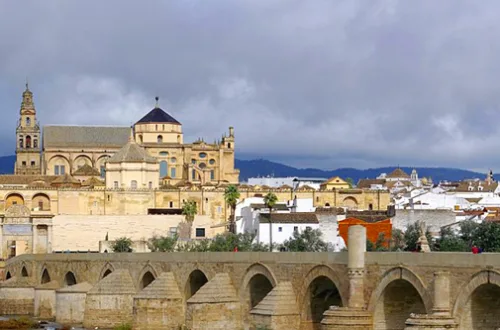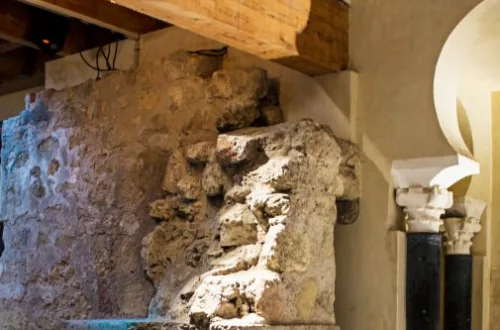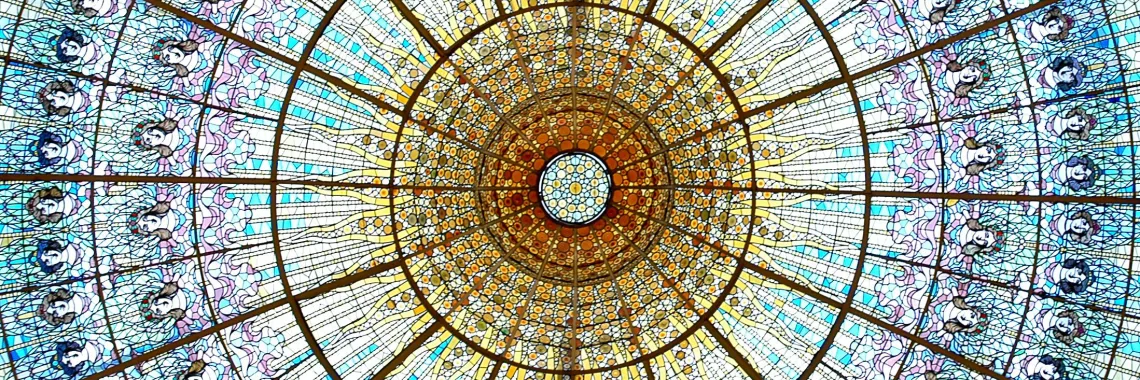
The Marvels of Modernism: Tracing Art Nouveau Treasures in Barcelona’s Urban Canvas
Set forth on an immersive visual odyssey through the pulsating heart of Catalonia’s metropolis, where the essence of Art Nouveau in Barcelona doesn’t merely exist—it flourishes with an infectious vitality. Within the dynamic confines of Barcelona, a pioneering art movement once took hold, extending its elaborate vines across the cityscape, infusing the very structures and cultural ethos with its presence. This stylistic revolution, Art Nouveau, unfurled with such passion that Barcelona is now revered as its animate exhibition—a living testament to a bygone era.
Countless art aficionados and cultural wayfarers are magnetized to this alluring urban expanse, all yearning to bask in the heritage that has unmistakably crowned Art Nouveau in Barcelona as a cornerstone of its architectural identity. As our journey unfolds, we navigate through the city’s serpentine lanes, where the signature sinuous lines and nature-inspired patterns of Art Nouveau speak volumes. Here, every edifice, every ironwork filigree, every pane of colorful glass narrates an epic of audacious transformation and splendor.
- The Birth of Art Nouveau in Barcelona
- Antoni Gaudí: The Maestro of Modernism
- Beyond Gaudí: The Other Visionaries of Art Nouveau in Barcelona
- Route Map: A Curated Itinerary of Art Nouveau Marvels in Barcelona
- Hidden Gems: A Voyage to the Lesser-Known Art Nouveau in Barcelona
- Preservation and Influence: The Living Legacy of Art Nouveau in Barcelona
- The Timeless Allure of Art Nouveau in Barcelona
This narrative is not simply inscribed upon Barcelona’s edifices; it is interlaced with the city’s very essence—a rich mosaic brimming with historic resonance and artistic fervor. Join me to meander through this living gallery, where Art Nouveau in Barcelona is not a mere whisper from the past, but a resounding chorus that continues to shape the city’s heartbeat.
The Birth of Art Nouveau in Barcelona
Journey back to the turn of the 20th century, where the vibrant city of Barcelona embraced a new aesthetic philosophy that would redefine its skyline. This was the era that witnessed the birth of Art Nouveau in Barcelona, a period where creativity soared and conventional boundaries in art and architecture were boldly challenged. It was here, amid the bustling streets and the rise of Catalan nationalism, that Art Nouveau found fertile ground, blossoming into an architectural revolution that would leave an indelible mark on the city’s identity.
Catalan Modernism: Barcelona’s Unique Art Nouveau Flavor
In the heart of Barcelona, a distinctive variant of Art Nouveau took shape, fueled by a surge of regional pride and a desire to forge a cultural identity unique to Catalonia. This local adaptation, known as Catalan Modernism, is a celebration of Catalonia’s spirit, blending the global Art Nouveau movement with local traditions and materials. As you delve into the world of Art Nouveau in Barcelona, you’ll discover how this artistic endeavor became synonymous with the city’s modern identity, crafting a narrative of innovation that still captivates those who wander through its enchanting streets today.
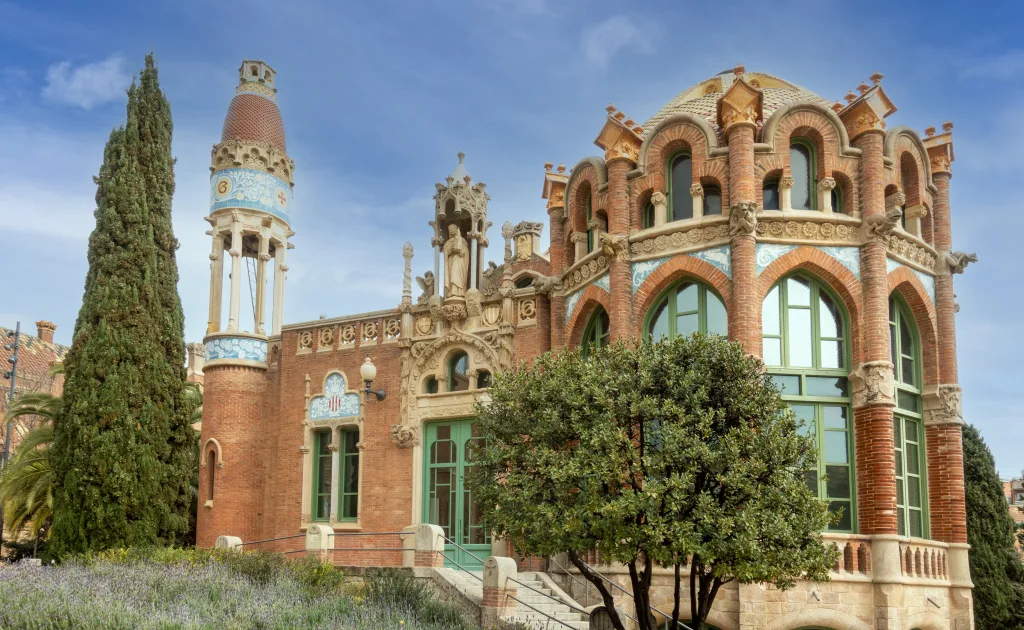
Antoni Gaudí: The Maestro of Modernism
Embark on a journey through the visionary world of Antoni Gaudí, the undisputed Maestro of Modernism whose architectural genius redefined the skyline of Barcelona. Gaudí’s work is a symphony of color, form, and texture that harmonizes the principles of nature with the stylistic features of Art Nouveau in Barcelona.
His masterpieces are not mere buildings, but poetic expressions etched in stone and mortar, inviting onlookers to a mesmerizing dance of imaginative design and intricate detail. As we delve into the life and creations of this legendary architect, we uncover how his innovative spirit and distinctive artistic touch cemented his status as a pillar of Modernism and a beloved son of Catalonia’s vibrant capital.
Sagrada Família: Gaudí’s Unfinished Masterpiece
Venture into the heart of Barcelona and behold the Sagrada Família, Antoni Gaudí’s magnum opus that epitomizes Art Nouveau in Barcelona. This architectural marvel, though still a work in progress, resonates with the city’s creative soul. Its soaring spires and intricate façades are a testament to Gaudí’s genius and stand as a bold declaration of Art Nouveau’s imaginative spirit. Here, you can immerse yourself in the details of a symphony carved in stone, an enduring icon of Barcelona’s artistic legacy.

Park Güell: A Whimsical Urban Oasis
Stroll through the verdant pathways of Park Güell, a public garden steeped in whimsy and wonder. This is where Art Nouveau in Barcelona melds seamlessly with the natural world, a signature of Gaudí’s design philosophy. The park is a canvas where architectural elements and organic shapes dance together in harmonious splendor. Every bench, mosaic, and archway tells a story of a visionary who saw art in the contours of nature, crafting an experience that captivates and enchants.
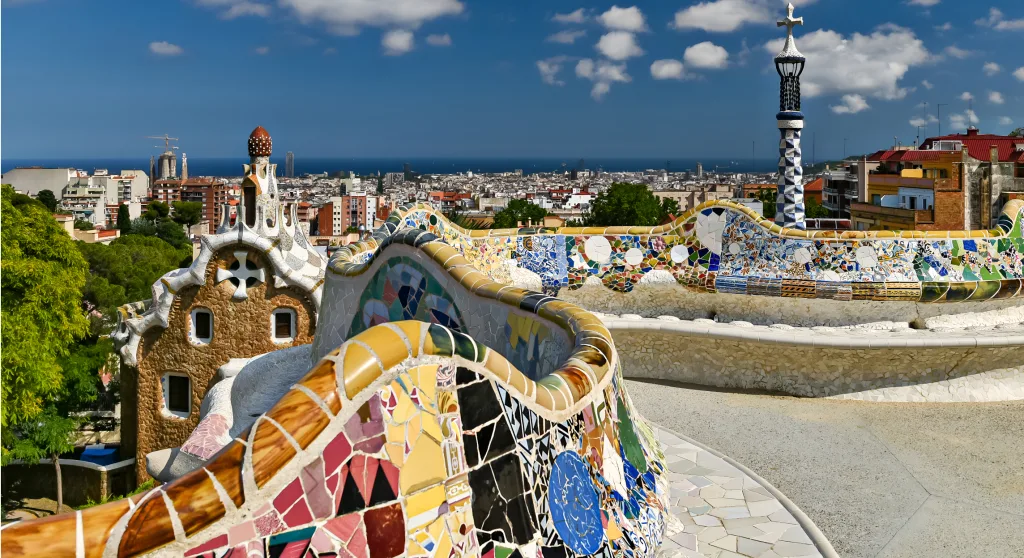
Casa Batlló and Casa Milà: Living Sculptures Amidst the Cityscape
Discover the living sculptures of Casa Batlló and Casa Milà, two crowning jewels that showcase the essence of Art Nouveau in Barcelona. These buildings are not mere structures but narratives in stone and glass, etched with the dreams of their creator. Casa Batlló’s fantastical façade invites onlookers into a fairy-tale, while Casa Milà’s undulating stone whispers the secrets of the sea. Each is a chapter in Barcelona’s architectural storybook, penned by Gaudí’s unbridled imagination.
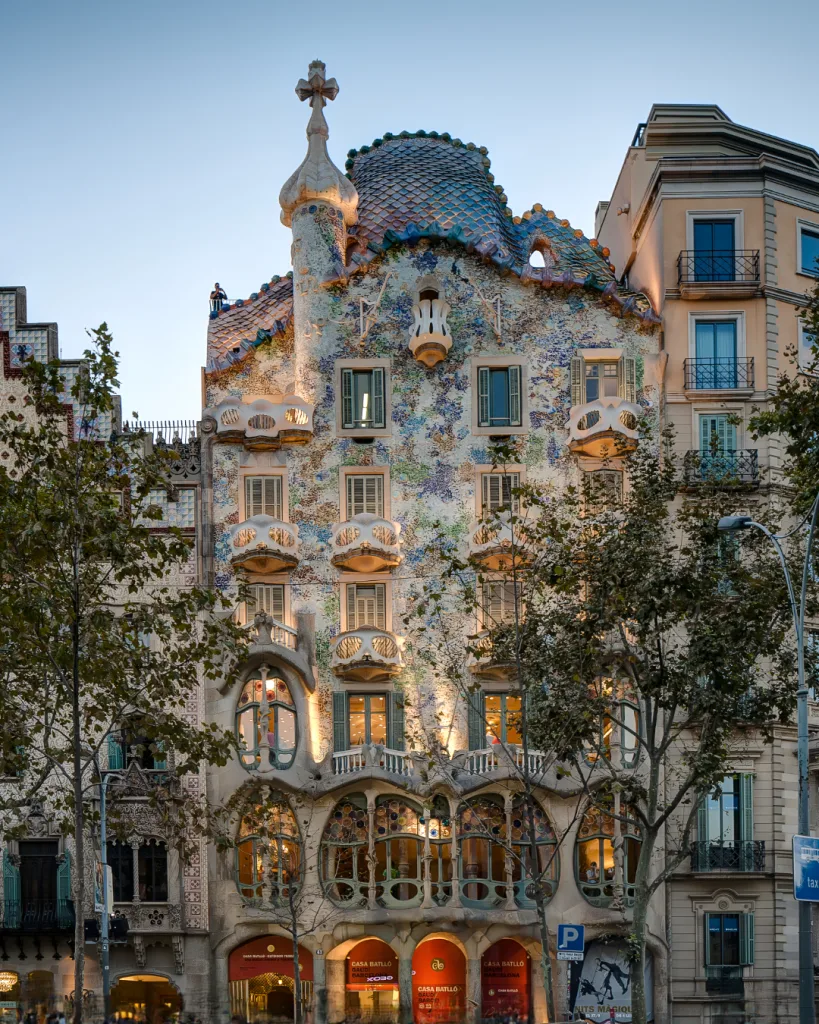
Beyond Gaudí: The Other Visionaries of Art Nouveau in Barcelona
While the name Antoni Gaudí often dominates the conversation about Art Nouveau in Barcelona, the city’s architectural narrative is far richer, woven with the talents of other visionary artists. These maestros of design, contemporaries of Gaudí, contributed immensely to the flourish of Art Nouveau, each infusing the movement with their unique interpretations and innovative designs. Their edifices stand as testaments to the diversity and depth of a style that swept through Barcelona, leaving behind a legacy that beckons to be explored. In this journey beyond Gaudí, we celebrate the lesser-sung heroes of Modernism and their indelible marks on the fabric of a city renowned for its architectural wonders.
Lluís Domènech i Montaner: An Architectural Virtuoso
In the grand tapestry of Art Nouveau in Barcelona, the weft and warp are rich with the genius of Lluís Domènech i Montaner. His contributions are pivotal, weaving a narrative that extends beyond Gaudí’s shadow to spotlight the breadth of creativity that defines the city’s architectural heritage.
Here are some of his most important works in the city:
Hospital de Sant Pau: A Modernist Haven
Immerse yourself in the architectural splendor of the Hospital de Sant Pau, a cornerstone of Art Nouveau in Barcelona. This isn’t just a hospital; it’s a sprawling complex of pavilions, each outshining the last. With its fusion of medieval charm and Modernist flair, the hospital stands as a grandiose celebration of creativity and innovation. Each structure within its grounds is a masterclass in design, beckoning visitors to explore a world where functionality meets fantasy.
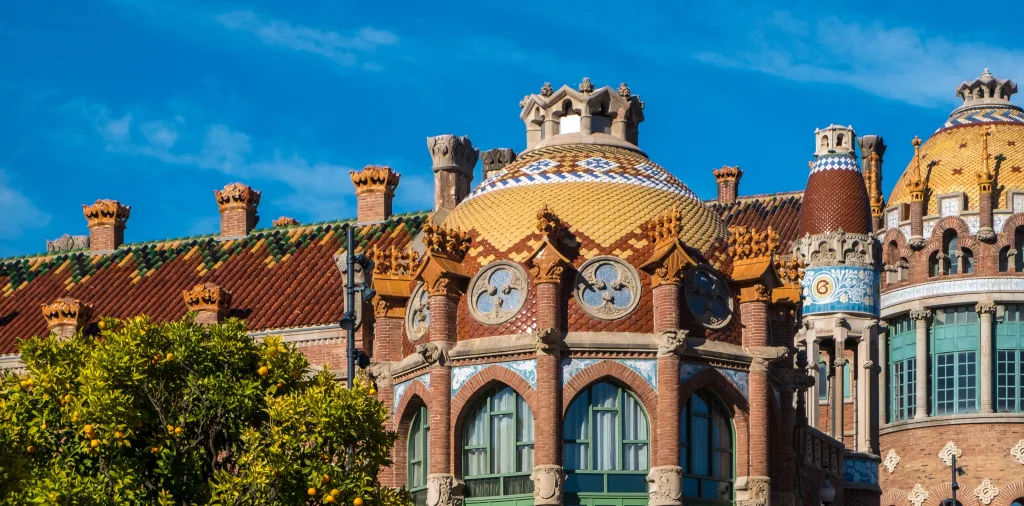
Palau de la Música Catalana: A Symphony of Light and Form
Step inside the Palau de la Música Catalana and witness a concert hall that sings with the soul of Catalonia. Here, stained-glass windows paint the interiors with kaleidoscopic light, while ornate sculptures dance along the walls. This building is more than a mere venue; it’s a living, breathing embodiment of Art Nouveau in Barcelona, resonating with the spirit of Catalan nationalism and the audacious spirit of Modernism.
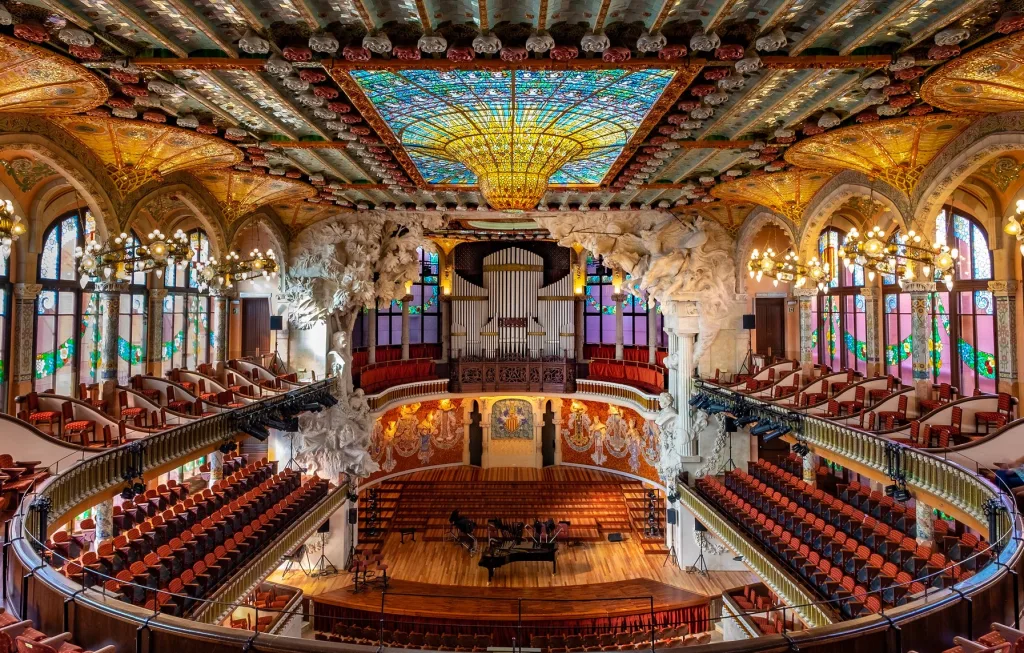
Casa Lleó Morera: An Architectural Gem
Behold the Casa Lleó Morera, a residential marvel that boasts an elaborate façade which whispers tales of a bygone era. Its interior decorations are a visual feast, earning it the prestigious accolade of best building in 1906 from Barcelona’s city council. As you wander through its halls, you’ll be transported back to an age where Art Nouveau in Barcelona was not just an architectural style but a statement of elegance and sophistication.

Casa Fuster: A Masterpiece Bridging Styles
Behold Casa Fuster, a beacon of Art Nouveau in Barcelona that stands as a testament to the twilight of Lluís Domènech i Montaner’s illustrious career. This building is not merely a structure but a canvas where traditional Spanish architecture and Modernist elements converge in a harmonious symphony. The façade, a stunning mosaic of creativity, showcases the architect’s ability to marry the old with the new, crafting a visual dialogue between eras that enchants and captivates.

Casa Thomas: An Ode to Detail and Design
Step closer and admire the Casa Thomas, where the intricate brickwork and floral motifs speak volumes of Domènech i Montaner’s unwavering dedication to detail and craftsmanship. Each brick, each petal, is a note in a grand opus of Art Nouveau in Barcelona, a song of stone and mortar that resonates with the city’s artistic soul. This building is more than an address; it’s a landmark where the architect’s legacy is etched into every contour, inviting passersby to pause and revel in the beauty of Modernism.
Each of these structures contributes to the rich tapestry of Art Nouveau in Barcelona, illustrating the depth and diversity of Domènech i Montaner’s architectural virtuosity. His legacy, like Gaudí’s, is integral to the city’s cultural heritage, offering a unique window into an era where architectural creativity knew no bounds.
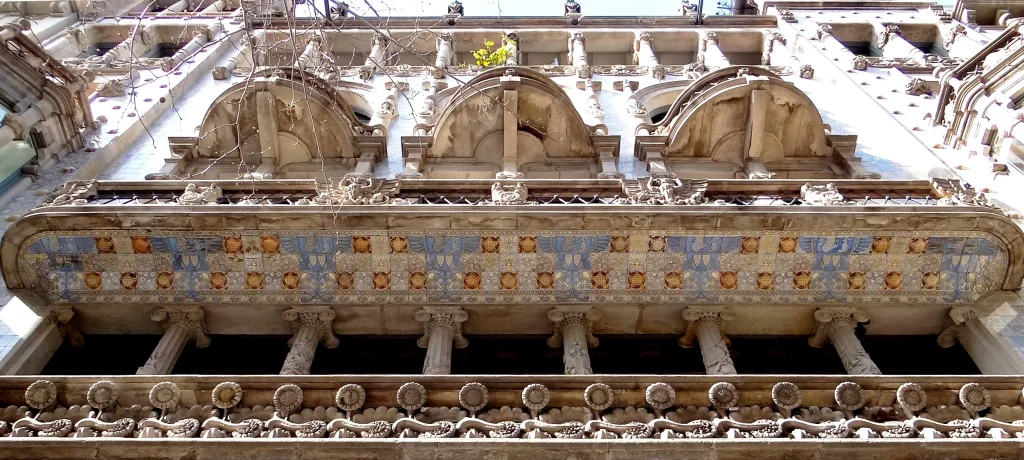
Josep Puig i Cadafalch: The Elegance of Form and Function
Josep Puig i Cadafalch was a contemporary of Antoni Gaudí and a prominent architect who made significant contributions to the architectural landscape of Barcelona with his unique blend of Gothic and Catalan Modernisme styles. Below is a list of some of his most notable works in Barcelona, which exemplify the elegance of form and function characteristic of Art Nouveau in Barcelona:
Casa Amatller: A Gothic and Flemish Tapestry in Art Nouveau Barcelona
Nestled heartily beside Gaudí’s iconic Casa Batlló, Casa Amatller emerges as a jewel of Art Nouveau in Barcelona. Its façade is a visual symphony, where Gothic meets Flemish architecture, crowned with a distinctive stepped gable that cuts a striking silhouette against the Barcelona sky. This architectural marvel is not just a neighbor to Modernism’s masterpieces; it is a standout tale of design, beckoning admirers with its unique blend of styles.

Casa Martí (Els 4 Gats): The Cradle of Catalan Modernism
Casa Martí, known affectionately as Els 4 Gats, stands as a historical pillar of Art Nouveau in Barcelona. It’s more than just a building; it’s the cradle of Modernism, a former gathering haven for the turn-of-the-century’s brightest artists and intellectuals. Today, its walls still whisper the fervent discussions of Picasso and his contemporaries, making it not just a site to visit but an experience to absorb, rich with the creative spirit that defines Barcelona’s artistic legacy.
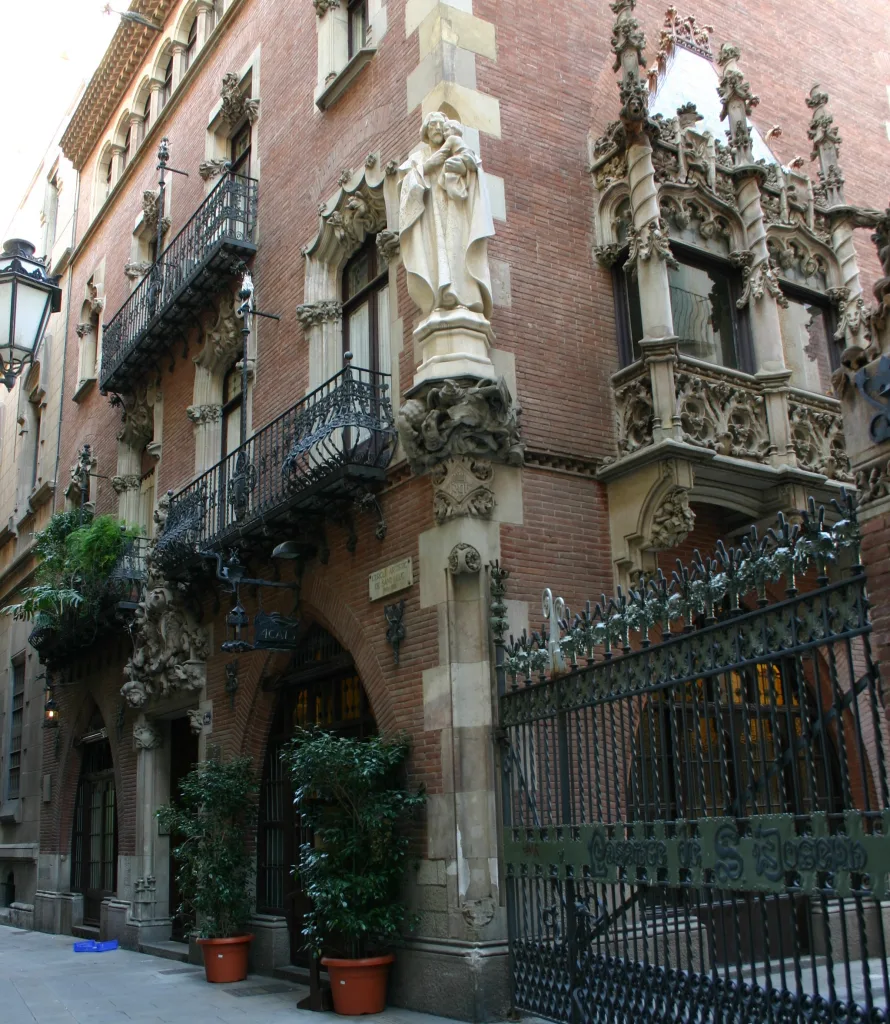
Palau del Baró de Quadras: A Modernist Melange
Within the heart of Art Nouveau in Barcelona, the Palau del Baró de Quadras stands as a testament to architectural eclecticism. Its façade, a masterful display of Modernist artistry, invites onlookers to a world where neo-Gothic intricacies dance with avant-garde design. Step inside, and the dialogue between past and future continues, with each element telling its own story of innovation and grandeur.
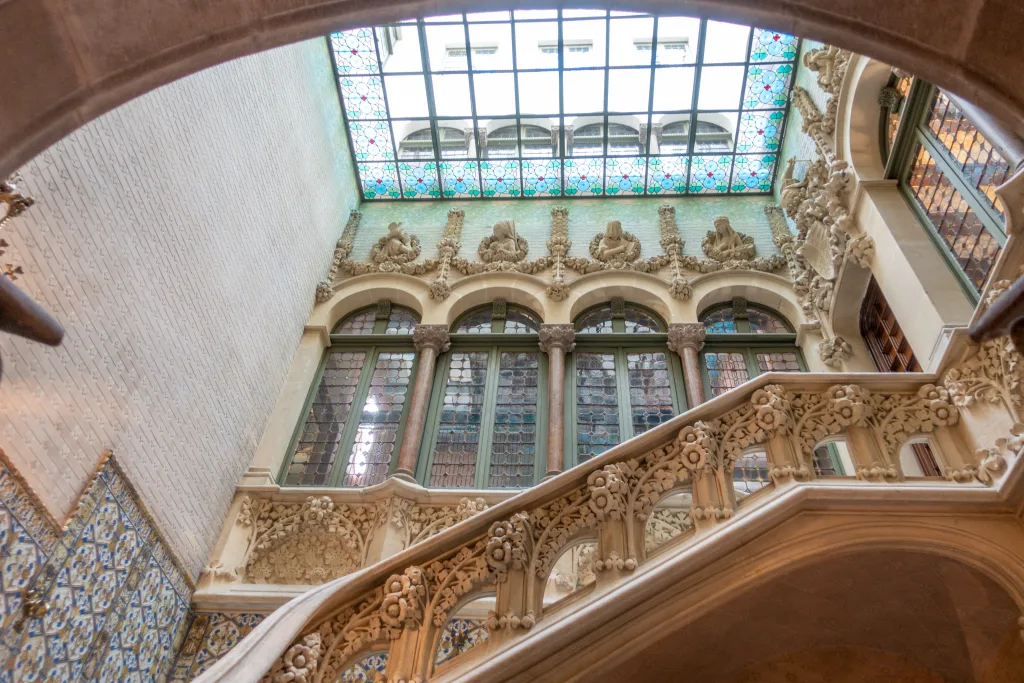
Casa Terrades (Casa de les Punxes): The Embodiment of Modernisme
Casa Terrades, or as it is affectionately known, Casa de les Punxes, pierces the skyline with its iconic pointed spires, earning its nickname “House of Spikes.” This edifice is not just a building; it’s a symbol of Art Nouveau in Barcelona, a visual poem composed of stone and iron that captures the essence of Modernism. Its towers stand tall, whispering the city’s commitment to architectural wonder to all who wander beneath.

Casa Macaya: A Canvas of Culture
The pristine white façade of Casa Macaya serves as a canvas for the intricate wrought ironwork and sculptural flourishes that adorn its surface. This building is more than its physical form; it’s a vibrant cultural hub within Art Nouveau in Barcelona, echoing with the voices of artists past and present. Today, it opens its doors to cultural pursuits, hosting exhibitions and social events that continue to weave the rich tapestry of Barcelona’s artistic community.
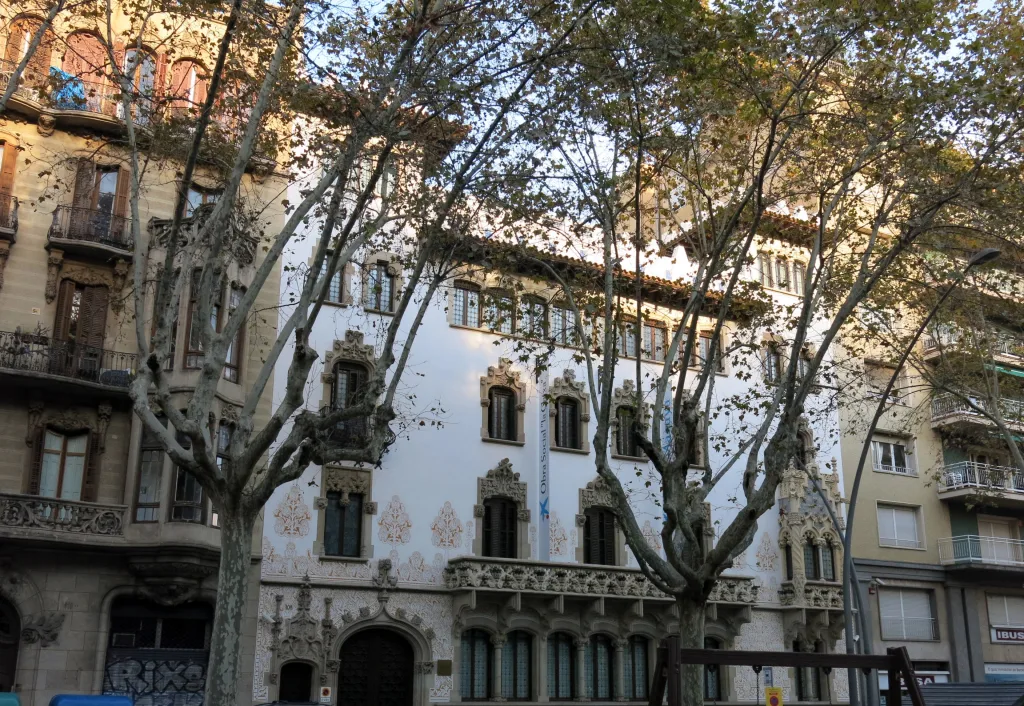
Route Map: A Curated Itinerary of Art Nouveau Marvels in Barcelona
Embark on a curated journey, meticulously crafted to showcase the full spectrum of Art Nouveau in Barcelona. This personalized itinerary is more than a guide—it’s your compass to the city’s most breathtaking Modernist landmarks, each a testament to an era of unparalleled creativity.
Begin your sojourn at the illustrious Hospital de Sant Pau, a site where history and art converge in a stunning display. Art Nouveau in Barcelona weaves its narrative through these hallowed halls, inviting you to step into a storybook of architectural splendor.
Chart your course to the enchanting Park Güell, where Antoni Gaudí’s genius spills over in vibrant mosaics and undulating forms—a true celebration of Art Nouveau in Barcelona. Next, be drawn to the dragon-scaled façade of Casa Batlló, where the stone seems to pulse with life, embodying the essence of Modernism.
Venture beyond the well-trodden path to discover hidden courtyards and lesser-known edifices that are the unsung heroes of Art Nouveau in Barcelona. The Casa Amatller‘s chocolate box charm and Casa Lleo Morera‘s understated elegance await—each corner, balcony, and door a silent narrator of artistic passion.
Your expedition culminates at La Sagrada Família, Gaudí’s magnum opus and a beacon of Art Nouveau in Barcelona. This architectural colossus stands as an unfinished ode to faith and art, a place where your journey through Modernism reaches its zenith, leaving an indelible imprint of awe and inspiration.

Hidden Gems: A Voyage to the Lesser-Known Art Nouveau in Barcelona
Embark on an enchanting journey through Barcelona’s labyrinthine alleys, where the lesser-known yet equally breathtaking Art Nouveau in Barcelona lies hidden like precious jewels in a crown. This guide illuminates those secluded spots that many maps overlook, yet they shimmer with the city’s architectural brilliance.
As you wander off the main thoroughfares, allow the cobblestone paths to lead you to the Casa Comalat, a residence that boasts dual façades dripping with Art Nouveau in Barcelona charm. Here, the intricate details and whimsical shapes capture the essence of a movement that prized beauty and innovation.
Nestled in the heart of the Eixample district, find the Casa de les Punxes, a castle-like structure piercing the sky with its pointed spires. This hidden fortress is a testament to the grandeur of Art Nouveau in Barcelona, inviting you to gaze upon its storied walls and dream of eras past.
In the tranquil quarters of Gràcia, the Casa Vicens awaits, Gaudí’s first major work and a UNESCO World Heritage Site. This lesser-known gem offers a more personal encounter with Art Nouveau in Barcelona, away from the bustling tourist routes.
Delve deeper into Barcelona’s Gothic Quarter and stumble upon the Palau Güell, a mansion that quietly boasts opulent Art Nouveau in Barcelona features. Its rooftop terrace, adorned with whimsical chimney pots, offers a silent narrative of the city’s artistic heritage.
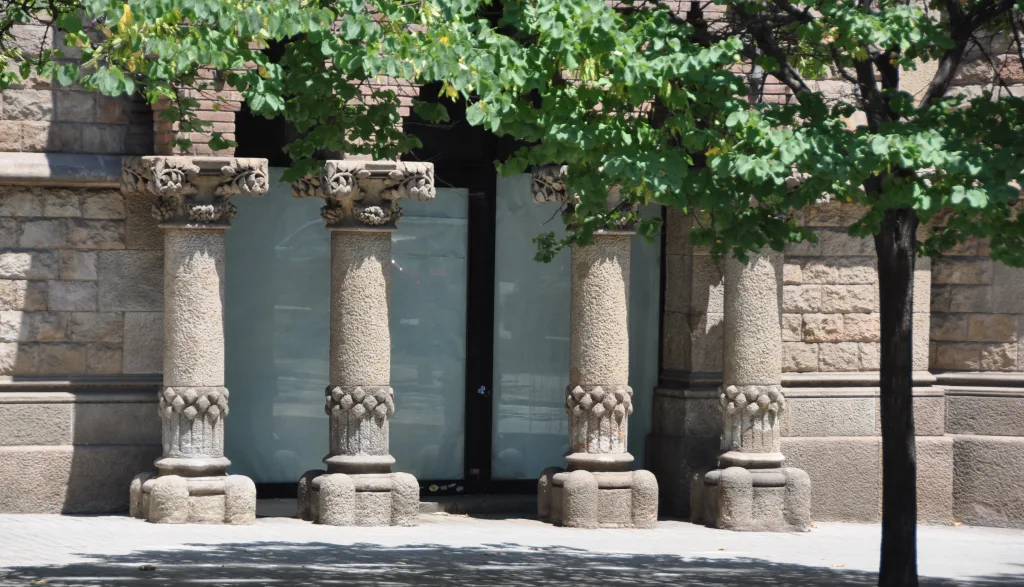
Discover Colonia Güell: A Hidden Treasure of Art Nouveau Near Barcelona
Venture further to the outskirts of Barcelona, and you’ll find the Colonia Güell, an industrial village steeped in Modernist tradition. Here lies Gaudí’s Crypt, a UNESCO World Heritage Site hailed as a laboratory for his later works, including the Sagrada Família.
In Colonia Güell, the interplay of light and stone within the Crypt showcases Gaudí’s innovative approach to Art Nouveau in Barcelona, marking a departure from the conventional into the realm of the extraordinary. The village itself, a canvas of 19th-century life, offers a tranquil retreat where the spirit of Catalonia’s industrial heritage and Gaudí’s architectural innovations coalesce into a living museum of Modernism.

Preservation and Influence: The Living Legacy of Art Nouveau in Barcelona
Dive into the heart of Catalonia’s cultural stewardship, where the Art Nouveau in Barcelona isn’t just a historical chapter, but a living, breathing influence on the city’s contemporary design scene.
Discover the meticulous techniques employed to restore the iconic façades and interiors of structures like the Palau de la Música Catalana. Here, Art Nouveau in Barcelona is more than architecture; it’s a heritage that breathes resilience and splendor into every restored tile and sculpted pillar.
Explore how Art Nouveau in Barcelona seamlessly weaves its way into the fabric of modern design. From chic boutiques to avant-garde exhibitions, the city’s artistic DNA is palpably infused with the Modernist spirit.
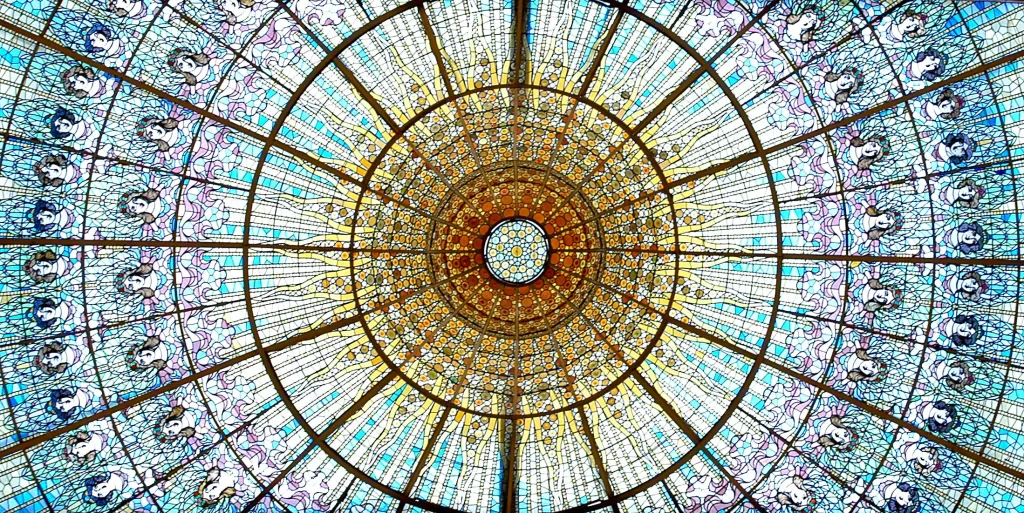
Global Impact: Barcelona’s Art Nouveau on the World Stage
Journey beyond the city’s borders to see how Art Nouveau in Barcelona has etched itself onto the global canvas, inspiring designers and architects across continents and cultures.
Trace the influence of Art Nouveau in Barcelona as it ripples through the world, from the sleek lines of Parisian metro entrances to the organic forms of Chicago’s skyscrapers. Barcelona’s architectural jewels have become global icons, celebrated and emulated by those who seek to capture their magic.
Grasp how Art Nouveau in Barcelona continues to spark creativity among new generations of artists and creators. Its legacy is not confined to history books, but is a vibrant muse for contemporary innovation.
The Timeless Allure of Art Nouveau in Barcelona
As our journey winds down, let’s take a moment to savor the enduring charm that Art Nouveau in Barcelona casts over the city’s landscape and the hearts of those who wander its storied streets. With each visit, the Modernista masterpieces beckon with a siren’s call, promising new secrets to uncover and old wonders to revisit.
The Art Nouveau in Barcelona is not merely a visual feast; it’s an immersive experience that envelops you. From the sun-kissed façades to the shadowy, lamp-lit corners of its interiors, every element is designed to enchant and captivate.
There is a magic woven into the very fabric of Modernism in Barcelona—a magic that calls out to travelers, urging them to return. It’s in the way light dances across mosaic tiles, how each sculpted curve tells a story, and the promise that no matter how many times you visit, there will always be something new to discover.
As the city evolves, so does the legacy of Art Nouveau in Barcelona. It stands as a testament to beauty and creativity that refuses to fade with time. This is not just history preserved; it’s history alive and breathing, continually inspiring awe and admiration.


